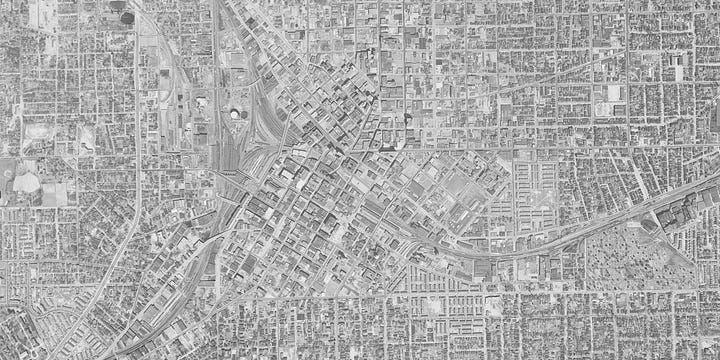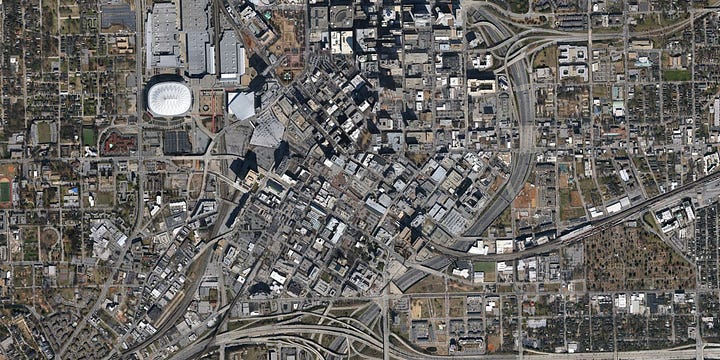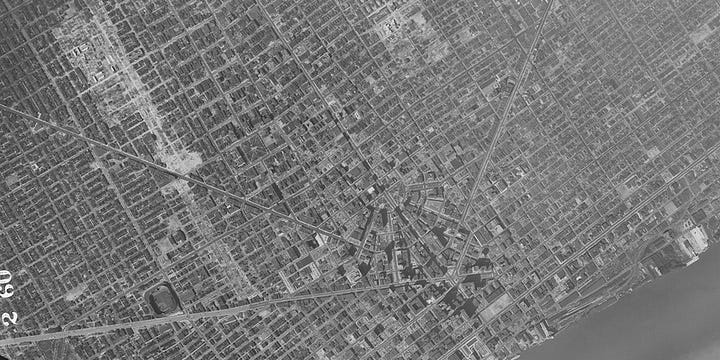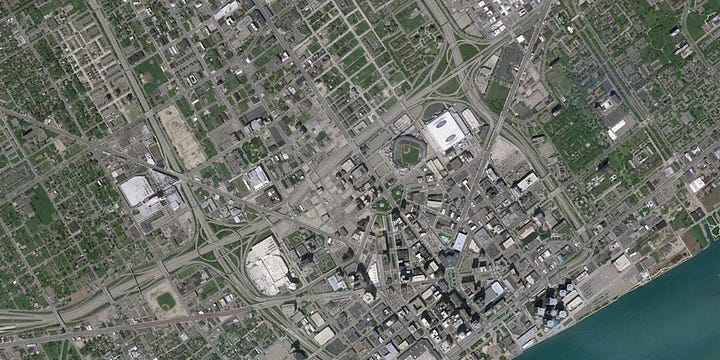

I see housing regulation and zoning as some of the modern world’s most important topics. America’s hyper-dependence on individual single family housing is at the root of some of the biggest economic, environmental, and social issues of the day. This type of planning forces people into their cars that cost a lot to buy and maintain, that spew carbon and promote sedentary lifestyles. It keeps people distant from their friends and workplaces, driving the loneliness epidemic. Anyone who’s spent time outside the US, Canada, and Australia —basically, the only countries that have this horrible type of zoning —can attest that single family, single use zoning is not the only way to configure towns and cities. Cities can be planned so people can live near one another, bypassing driving and isolation. They can have vibrant street life with shops and other amenities within walking distance. These cities can even be in America, in fact, they once were.
I was pretty startled by The University of Oklahoma’s “60 Years of Urban Change” when it came out in 2014. The project shows what many large American cities looked like before and after their transformation —or deformation —by mid-20th century urban renewal initiatives.


Urban renewal was a movement that swept the US and several global cities from the 1940s to 1960s. The movement tracked with the general movement from cities to suburbs —a movement that has more or less continued to this day. For the most part, urban renewal leveled many older, smaller urban buildings to make way for larger buildings and highways, shifting cities from being people centric to car centric. But as the U of O’s aerial pictures testify, these cities were bastions of walkability and “fine grained architecture.” Particularly surprising was the erstwhile density of cities like Houston and Atlanta, which are no paragons of car-centricity and sprawl. The pictures are a stark reminder that a lot of stuff that sucks was once good, and, I’d argue, can be made again. Check out the full set of images and notes at U of O’s website.
Song of the day:



